Your fingernails can tell a story about your health, often revealing underlying conditions you might not even be aware of. Changes in color, texture, or shape may seem insignificant but could indicate anything from nutrient deficiencies to serious diseases like heart conditions or cancer. While not all nail changes are alarming, certain patterns should not be ignored. Here are seven health conditions your nails might reveal, according to medical experts.
1. Beau’s Lines: Signs of Illness or Nutrient Deficiency
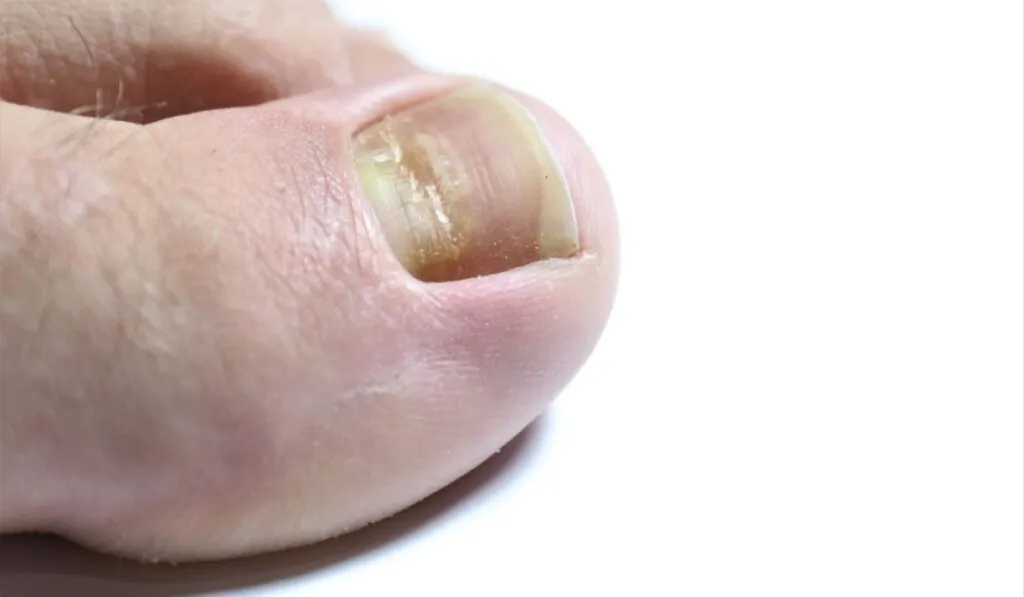
Beau’s lines are horizontal grooves or ridges running across the nails. These deep indentations form when nail growth is temporarily disrupted due to physical stress, illness, or nutritional deficiencies.
- What Causes Beau’s Lines?
Severe illnesses, infections, and deficiencies in essential nutrients like zinc or calcium can trigger these grooves. Interestingly, some people developed Beau’s lines after recovering from COVID-19 or undergoing chemotherapy. - When to Worry:
While Beau’s lines can occasionally appear without serious implications, recurring grooves or visible gaps in nail growth could signal chronic stress or an underlying condition that warrants medical attention.
2. Clubbing: Linked to Heart or Lung Disease
Clubbing causes the fingertips to become rounded, with the nails curving downward in a bulbous shape. It develops gradually and is often linked to oxygen deprivation in the blood.
- Causes of Clubbing:
This condition is commonly associated with lung diseases like chronic obstructive pulmonary disease (COPD) or heart conditions that reduce oxygen levels. - Other Symptoms to Note:
Fatigue, swelling in the extremities, and chest pain often accompany clubbing. If you notice these symptoms alongside changes in your nails, consult a doctor immediately.
3. Spoon-Shaped Nails: A Warning Sign of Iron Deficiency
Spoon-shaped nails, also known as koilonychia, curve inward like a tiny spoon. This unusual shape often points to iron deficiency anemia, a condition where the blood lacks enough healthy red blood cells.
- Underlying Causes:
Poor nutrition, blood loss, or increased iron demand during pregnancy are common causes of iron deficiency. - What to Watch For:
Additional symptoms include fatigue, pale skin, and headaches. If spoon-shaped nails are paired with these signs, a blood test and dietary changes may be necessary.
4. Nail Pitting: Associated with Skin Disorders
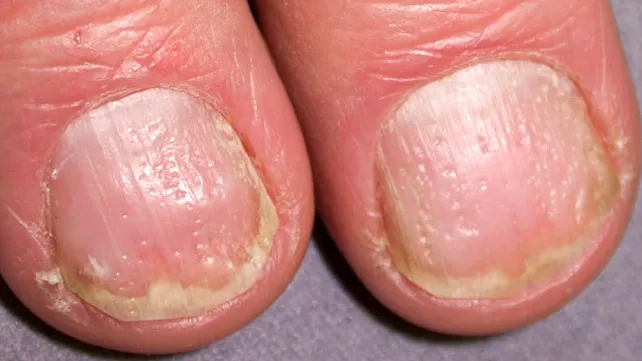
Small dents or depressions on the surface of the nails, known as nail pitting, are frequently linked to skin conditions such as psoriasis, eczema, or alopecia areata.
- Why It Happens:
Psoriasis, a chronic skin condition characterized by scaly patches, is a leading cause of nail pitting. Other conditions like eczema or autoimmune disorders such as alopecia can also contribute. - When to Seek Help:
If pitting occurs alongside other symptoms like flaky skin or hair loss, consult a dermatologist for an accurate diagnosis and treatment plan.
5. Dark Streaks Under the Nail: A Potential Sign of Melanoma
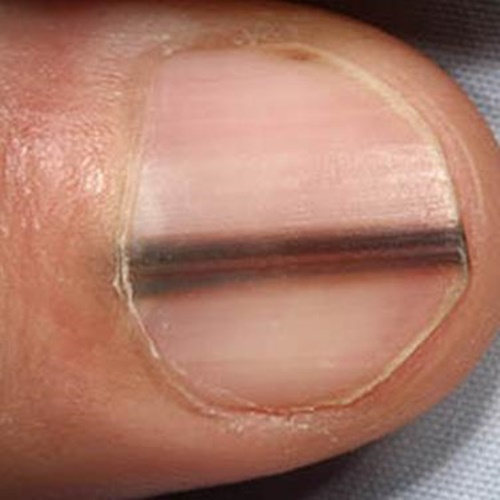
A dark stripe or streak under the nail can be alarming. While it might be harmless in some cases, it could also indicate melanoma, a dangerous form of skin cancer.
- Why It’s Serious:
Melanoma can develop under the nails and often presents as a dark, persistent stripe that changes over time. - Action to Take:
If you notice a dark streak that doesn’t fade or begins to change in size, consult a dermatologist immediately. Early detection is crucial for effective treatment.
6. Terry’s Nails: Indicators of Liver Disease
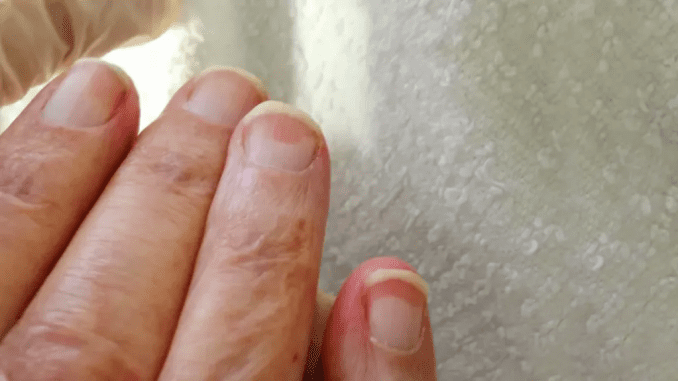
Terry’s nails are characterized by white nail beds with a reddish-brown band near the tips. This condition, named after Dr. Richard Terry, is often linked to liver disease.
- Conditions Associated with Terry’s Nails:
Besides liver problems, these nails can indicate heart disease, diabetes, or even the natural aging process. - Additional Warning Signs:
Symptoms like fatigue, jaundice (yellowing of the skin), and appetite loss may accompany Terry’s nails. A healthcare provider can help diagnose and address the underlying issue.
7. Yellow Nails: Fungal Infections or Something More Serious
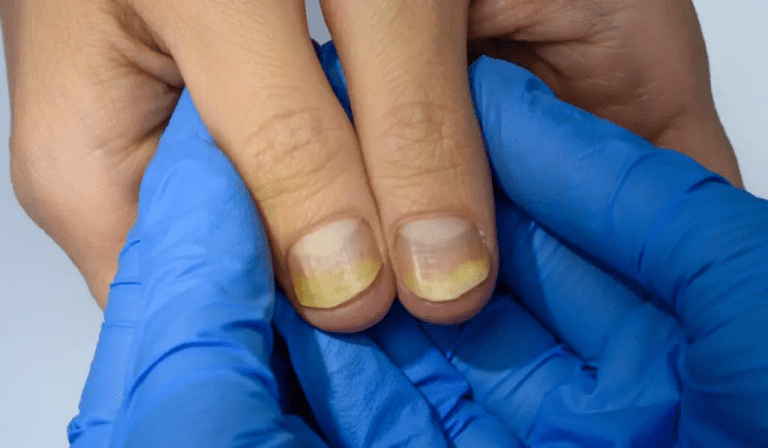
Yellow nails are most commonly caused by fungal infections but can also signal more severe health conditions like diabetes, thyroid issues, or lung disease.
- Common Causes:
Fungal infections lead to thickened, brittle nails that crumble over time. However, persistent yellowing could point to more complex health problems. - When to Worry:
If yellow nails don’t improve with antifungal treatments, seek a medical evaluation to rule out other conditions.
Improving Nail Health Through Nutrition and Care
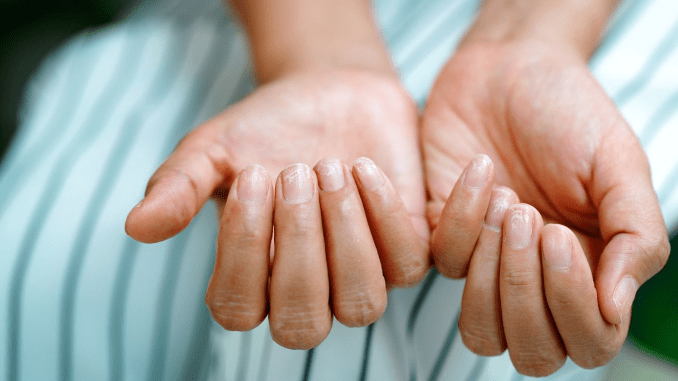
Taking care of your nails isn’t just about aesthetics—it’s also about maintaining overall health. Here are some tips to keep your nails strong and healthy:
- Eat a Balanced Diet:
Incorporate foods rich in proteins, vitamins, and minerals like iron, zinc, and calcium to support nail growth. - Stay Hydrated:
Drinking plenty of water prevents nail brittleness and dryness. - Protect Your Nails:
Wear gloves while cleaning or handling chemicals to minimize exposure to harsh substances. - Get Regular Check-Ups:
Routine medical exams can catch nutrient deficiencies or underlying health issues before they worsen.
Conclusion: Nails as Windows to Your Health
Your nails are more than just an aesthetic feature—they’re a window into your overall health. Subtle changes in their appearance can signal everything from minor deficiencies to serious illnesses. While not all nail abnormalities require immediate concern, persistent or unusual changes should prompt a conversation with your doctor. By paying attention to your nails, you can catch potential health issues early and take proactive steps to address them. So next time you notice something unusual, remember—it’s your body’s way of sending you a message.


